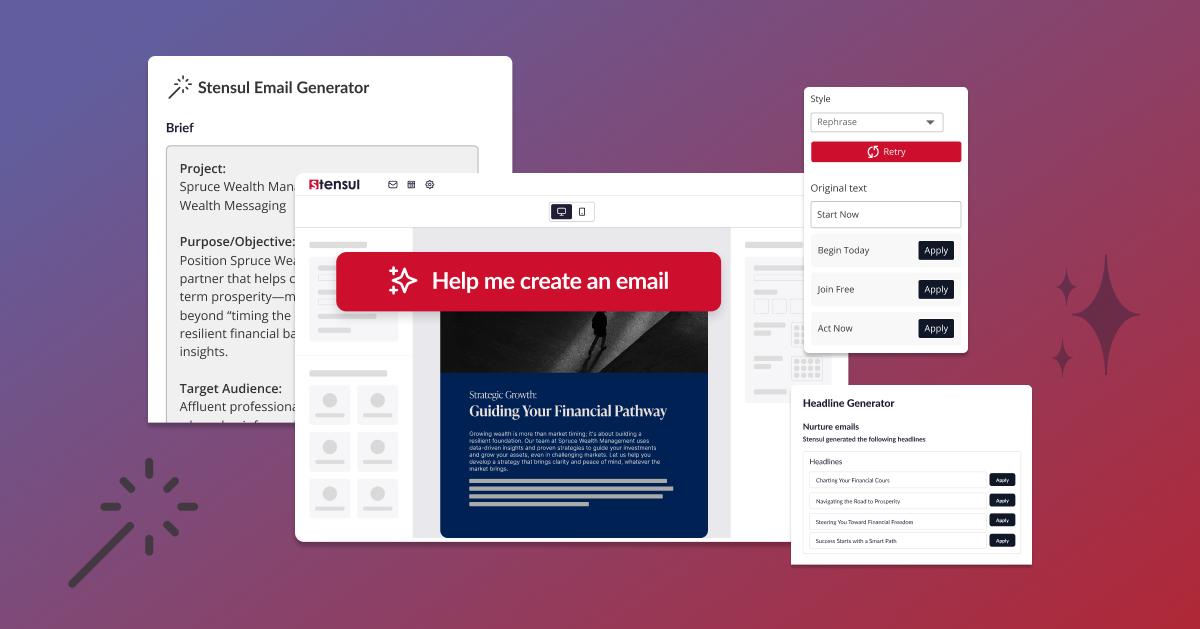There are accessibility requirements your marketing emails must meet. Not only is it an important aspect of laws on the books in the United States and Canada, but you’re leaving dollars on the table if your emails are incomprehensible to any portion of your intended audience.
Because using email as a marketing channel continues to grow, it might be useful for you to review Americans with Disabilities Act (ADA) requirements while considering the larger business impact they have.
An overview of ADA requirements
The ADA and the similar Access Canada Act declared that companies must be ADA-compliant but without specific, clear guidelines. The Web Content Accessibility Guidelines (WCAG) removed any questions by stating what the ADA means, declaring that in emails, companies must:
- Maintain a logical reading order
- Use heading elements in code
- Include sufficient contrast between text and background colors
- Provide text alternatives for images
- Feature meaningful link text
- Keep code concise
- Use a descriptive subject line
If you are involved in marketing email creation, it’s useful to understand the legal ADA requirements. The aim of the ADA requirements is not to place some kind of bureaucratic burden on you but to make emails easier for people with disabilities to take in your email message. For example, think in terms of the contrast between your text and background, and whether the tables your email template uses would read correctly on tablets or other mobile devices.
Sacrificing ease of accessing information for stylistic preferences just won’t cut it. Given you can be fined $75,000 for just your first compliance failure, the monetary risk of ignoring these laws is simply not worth it.
Remember to use semantic code when building your emails to provide enough space around your text, and use colors that aren’t too similar or muted for the benefit of color-blind folks.
In time, complying with ADA requirements will become rather intuitive when you take a step back and think about who and why they are actually helping.
A shared benefit
According to the World Bank, 15% of the globe’s population has a disability. A common misconception is that all disabilities are easy to outwardly identify, but plenty of the screen-related disabilities that accessibility requirements address are initially indiscernible.
The World Health Organization reported that 2.2 billion people globally have impaired vision, and that number is expected to grow as the world’s population ages.
It’s important to remember that there are varying degrees of accessibility needs. Some members of your audience might be 100% blind, while others have different levels of vision impairment that can’t be reversed with corrective lenses (for instance, color blindness). When aspects of your email aren’t ADA-compliant, that’s a massive pain for a large segment of your audience and a pain point for your business—you’re only reaching a portion of your intended audience. By making certain your emails are ADA compliant you’re benefiting both those individuals and your organization
Accessibility and good design is possible
There is no reason to think that ADA-compliant emails will be design horrors. Design that makes an impact and design that accommodates those with impaired vision are not mutually exclusive. To learn more about how to blend good email design with ADA compliance, download the Stensul eBook, 9 steps to creating emails that look great and perform better.
Along with designing good-looking emails, be sure to create a plain text version. One growing reason to do so is to allow those with limited vision to have their smart speakers read your email. Smart speakers like Amazon Alexa and Google Home are routinely used by about 91 million people in the U.S. Asking a smart speaker to read an email is becoming an increasingly normal occurrence, increasing the need for accessibility protocols in more of your audience’s content. If you don’t have a plain text version of your email, for example, Alexa won’t be able to read it out loud because smart speakers can’t read text that’s burned into images.
Besides risking losing thousands of dollars and clicks by ignoring ADA requirements, you’re effectively abandoning a larger percentage of your audience than you may realize. Chances are accessibility protocols will only continue to increase and become more inclusive, so it’s in everyone’s benefit to stay on top of these changes.


